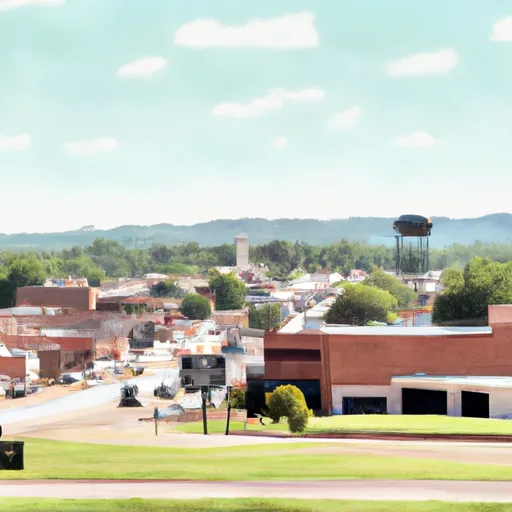-
 Snoflo Premium
Snoflo Premium
Get unlimited access to all our content
With no Ad interruptions! - Start Your Free Trial Login with existing account
Farmington
Eden Index
Climate
8.2
•
Recreation
4.5
•
Community
3.5
•
Safeguard
5.7/10

Farmington, Arkansas is located in the northwest part of the state and has a humid subtropical climate with hot summers and mild winters. The average temperature ranges from 35°F in January to 80°F in July. Farmington's hydrology constituents include the Illinois River, which provides opportunities for kayaking, canoeing, and fishing. The city also has numerous parks and outdoor recreation areas, such as Wilson Park and Lake Fayetteville, which offer hiking, biking, and picnicking. Additionally, the nearby Ozark National Forest provides opportunities for camping, hunting, and exploring the natural beauty of the region.
What is the Eden Index?
The Snoflo Eden Index serves as a comprehensive rating system for regions, evaluating their desirability through a holistic assessment of climate health, outdoor recreation opportunities, and natural disaster risk, acknowledging the profound impact of these factors on livability and well-being.
Climate Health Indicator (CHI): 8.2
Farmington receives approximately
1162mm of rain per year,
with humidity levels near 81%
and air temperatures averaging around
15°C.
Farmington has a plant hardyness factor of
7, meaning
plants and agriculture in this region tend to thrive during the non-winter months.
By considering the ideal temperature range, reliable water supplies, clean air, and stable seasonal rain or snowpacks, the Climate Health Indicator (CHI) underscores the significance of a healthy climate as the foundation for quality living.
A healthy climate is paramount for ensuring a high quality of life and livability in a region, fostering both physical well-being and environmental harmony. This can be characterized by ideal temperatures, reliable access to water supplies, clean air, and consistent seasonal rain or snowpacks.
Weather Forecast
Streamflow Conditions
Robert S. Kerr Reservoir
Area Rivers
Robert S. Kerr Reservoir
Snowpack Depths
Robert S. Kerr Reservoir
Reservoir Storage Capacity
Robert S. Kerr Reservoir
Groundwater Levels
Recreational Opportunity Index (ROI): 4.5
The Recreational Opportunity Index (ROI) recognizes the value of outdoor recreational options, such as parks, hiking trails, camping sites, and fishing spots, while acknowledging that climate plays a pivotal role in ensuring the comfort and consistency of these experiences.
Access to outdoor recreational opportunities, encompassing activities such as parks, hiking, camping, and fishing, is crucial for overall well-being, and the climate plays a pivotal role in enabling and enhancing these experiences, ensuring that individuals can engage in nature-based activities comfortably and consistently.
Camping Areas
| Campground | Campsites | Reservations | Toilets | Showers | Elevation |
|---|---|---|---|---|---|
| Jackson Creek Park - Lake Texarkana | None | 327 ft | |||
| Clear Springs - Wright Patman Lake | 100 | 259 ft | |||
| Herron Creek - Wright Patman Reservoir | 100 | 267 ft | |||
| Cass County Park | 46 | 244 ft | |||
| Malden Lake - Wright Pattman Lake | 39 | 259 ft | |||
| Piney Point - Wright Patman Lake | 70 | 298 ft | |||
| Atlanta State Park | 60 | 286 ft | |||
| Kelly Creek Park - Lake Wright Patman | 80 | 252 ft | |||
| Intake Hill Park- Wright Patman Lake | None | 251 ft | |||
| Rocky Point - Wright Patman Lake | 125 | 259 ft |
Nearby Ski Areas
Catastrophe Safeguard Index (CSI):
The Catastrophe Safeguard Index (CSI) recognizes that natural disaster risk, encompassing floods, fires, hurricanes, and tornadoes, can drastically affect safety and the overall appeal of an area.
The level of natural disaster risk in a region significantly affects safety and the overall livability, with climate change amplifying these risks by potentially increasing the frequency and intensity of events like floods, fires, hurricanes, and tornadoes, thereby posing substantial challenges to community resilience and well-being.
Community Resilience Indicator (CRI): 3.5
The Community Resilience Indicator (CRI) recognizes that education, healthcare, and socioeconomics are crucial to the well-being of a region. The CRI acknowledges the profound impact of these elements on residents' overall quality of life. By evaluating educational resources, healthcare accessibility, and economic inclusivity, the index captures the essential aspects that contribute to a thriving community, fostering resident satisfaction, equity, and social cohesion.

